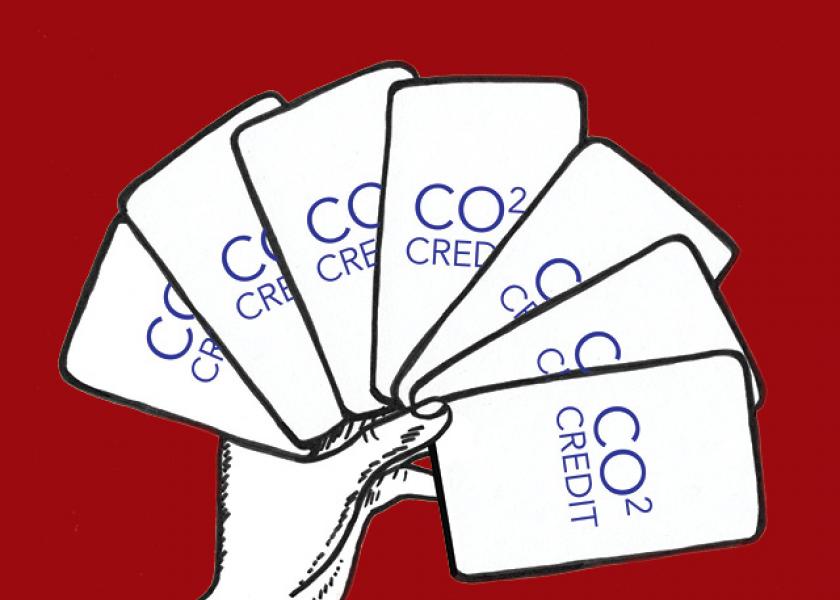The Carbon Credit Game: Ag Retail Has The Strongest Hand

There certainly has been no lack of hoopla lately regarding the opportunities farmers will reap from the emerging carbon marketplace and other sustainable initiatives.
While the architects of the new eco-markets focus on building opportunities for farmers, they seem to be dismissing a key player that could determine the success or failure of carbon and water quality markets as a whole. That player is none other than ag retail.
Why Ag Retail?
Aren’t carbon credits all about the farmer and his or her fields? Not necessarily.
For those who run the existing crop of carbon markets and think that farmers are the only ones who do anything of consequence within a field’s border, they will quickly learn that farmers don’t have all the cards needed to play this game. Those who choose to play this game will learn if you don’t have “all the cards”—or in this case, the data—you are not going to win or better yet even have a seat at the poker table.
Ag retail holds one of the strongest hands when it comes to this carbon game. In order to be paid real money for a carbon credit, that credit will likely be tied to proof that the specifics of certain activities took place within a field.
The easiest way to prove such activities involves maintaining a digital record. Most farmers collect at least part of the data, such as planting and harvest information, but one of the most important data layers needed to validate a carbon credit revolves around the application of fertilizer—even more specifically, nitrogen fertilizer. In many cases, an ag retailer creates the fertility “as-applied” layer or layers.
Nitrogen fertilizer is a key driver. Balancing the amount and timing of nitrogen application to actual soil types and crop nutrient removal is an essential metric involved when considering a carbon credit’s validity and value. Nitrous oxide is of particular concern. Nitrous oxide release usually happens because excess nitrogen was not used by the growing crop. Nitrous oxide is estimated to be nearly 300 times more powerful than carbon dioxide itself. So it is a big deal. Without a doubt, ag retail will be watched like a hawk when it comes to this issue. Expect voluntary compliance programs such as The Fertilizer Institute’s 4R initiative to grow among more ag retailers, and don’t be surprised if mandatory regulations follow.
Worst Kept Secret In Ag
The second overlooked fact about ag retailers and their role in carbon markets is ag retail in most cases not only holds the “data cards” regarding fertilizer applications but in many cases also holds most of the field activity “data cards” the farmer creates as well. That is because farmers have traditionally adopted ag retailers and their associated precision agronomy departments as their “trusted-advisers” with data.
Carbon markets will likely redefine what a “trusted adviser” really means. Managing data not only for optimizing agronomic outcomes but also for meeting desired sustainability goals will be the balancing act required of such professionals who advise farmers. This will mean educating and coaching farmers to get them to a new level of “data nirvana” necessary to play the carbon game. This entails creating more and better layers of data regarding field activities and soil testing. Simply offering the “meat and potatoes” planting and harvest maps alone will not cut it. Digital records of tillage passes, cover crop seedings and terminations, and even sprayer applications may need to be kept. From this point, it is probably wise for any activity that involves a pass across a field to be included in a farmer’s digital acre portfolio.
By default, the task of coaching, gathering and organizing a farmer’s data; simultaneously “pairing” those data with the “as-applied” fertility layers created internally; and delivering that on a silver platter to the carbon marketplace will be the onus placed at the feet of many ag retailers. This “role” became further defined recently when the Senate passed the “Growing Climate Solutions Act of 2021. Tucked within that legislation is the creation of “Greenhouse Gas Technical Assistance Provider and Third-Party Certifiers.” Ag retailers may have deja vu here as this direction is reminiscent of past NRCS Technical Service Provider programs. If that is the case, then ag retailers better start getting ready as they’re in a prime position to fill the role.
Agronomy Is Local
“Carbon farming” will require new ways to farm. This means adopting new management practices such as cover crops, no-till and split-nitrogen applications to name a few. Because ag retailers are positioned right near the farmers’ “back 40,” they are still one of the best qualified from an agronomic sense to be a farmer’s carbon coach.







